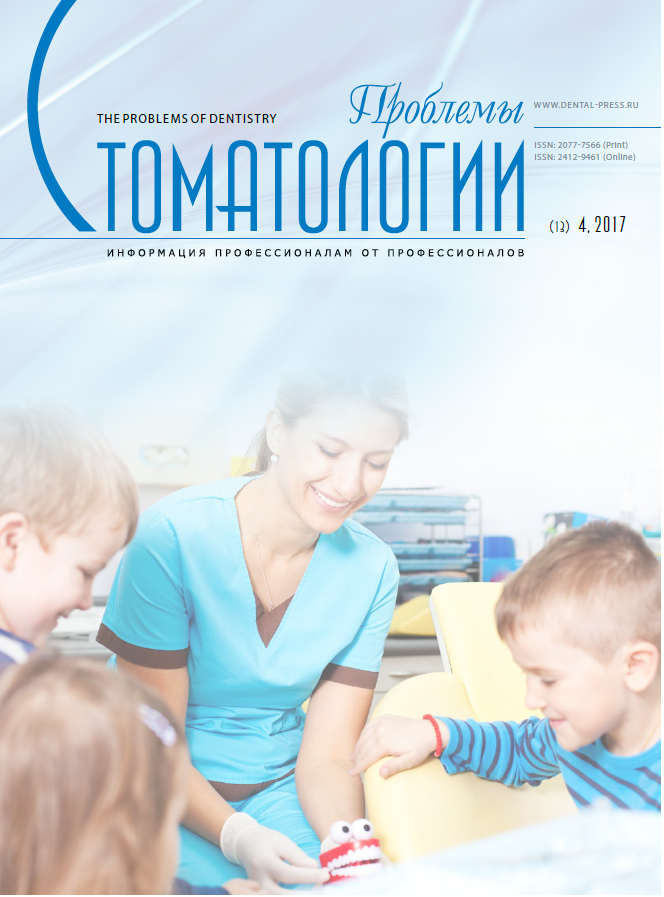Ekaterinburg, Russian Federation
Ekaterinburg, Russian Federation
Ekaterinburg, Russian Federation
Ekaterinburg, Russian Federation
Importance. Fourniers gangrene occurs as a result of infectious processes of the urogenital tract, in immunocompromised patients with diabetes, obesity, malignant neoplasms. Fournier,s gangrene progresses for two to three weeks, causing tissue destruction. The basis of the treatment of Fourniers gangrene is an emergency surgical intervention in combination with antibacterial and detoxification therapy. The article reflects the importance of differential diagnosis of Fournier,s gangrene with a complicated form of primary syphiloma (phagadenic chancre). Purpose. To demonstrate the diversity of clinical manifestations of Fourniers gangrene, treatment, differential diagnosis. Materials and methods. The literature review of materials of domestic and foreign researchers, in which the etiology, pathogenesis, clinical and laboratory picture, diagnosis, treatment, and prognosis of Fourniers gangrene using the search engines Pubmed, Medline, Cochrane, Elibrary. The authors present the clinical cases of patients with Fournier,s gangrene, clinical features of complicated chancre in a patient with primary syphilis, which are necessary for adequate differential diagnosis. Results. Since 2007 to 2016 were seven men with Fournier,s gangrene on treatment in purulent surgery Department. Patients performed the autopsy, drainage of foci of necrosis, necrectomy systemic antibiotic therapy, followed by autodermoplasty. Conclusions. Fournier,s gangrene rare and severe form of lesions of the external genitalia. The prognosis of the disease is serious and depends on timely and correct treatment. The rise of complicated cases of hard chancre. It is necessary to differentiate Fournier s gangrene with clinical manifestations of syphilis.
fournier,s gangrene, necrotizing fasciitis, autodermoplasty, syphilis, chancre.
1. Chernyad'ev, S. A. Piodermii : uchebnoe posobie dlya osvaivayuschih obrazovatel'nye programmy vysshego obrazovaniya po special'nosti Lechebnoe delo. - Ekaterinburg : UGMU, 2016 - 111 s.
2. Efimenko, N. A. Gangrena Furn'e / N. A. Efimenko, V. V. Privol'nee // Klinicheskaya mikrobiologiya i antimikrobnaya himioterapiya. - 2008. - T. 10, № 1. - S. 25-34.
3. Prohorov, A. V. Gangrena Furn'e / A. V. Poohorov // Kazanskiy medicinskiy zhurnal. - 2016. - T. 97, № 2. - S. 256-261.
4. Taken K. Fournier’s gangrene: causes, presentation and survival of sixty-five patients. Pak J Med Sci, 2016, vol. 32, no. 3, pp. 746-750. doi: 10.12669/ pjms.323.9798.
5. Yoshino Y. Severe Fournier’s gangrene in a patient with rectal cancer: case report and literature review. World Journal of Surgical Oncology, 2016, no. 14 (1), pp. 234. doihttps://doi.org/10.1186/s12957-016-0989-z.
6. Ishida T.A Case of Fournier’s Gangrene Caused by Small Intestinal Perforation during Bevacizumab Combination Chemotherapy. Gan To Kagaku Ryoho, 2016, vol. 43, no. 7, pp. 909-911.
7. Wanis M., Nafie S., Mellon J.K. A case of Fournier’s gangrene in a young immunocompetent male patient resulting from a delayed diagnosis of appendicitis. J Surg Case Rep, 2016, no. 4. pii: rjw058. doi:https://doi.org/10.1093/jscr/rjw058.
8. Obi A.O. Isolated Fournier’s gangrene of the penis. Niger J Clin Pract, 2016, no. 19, pp. 426-430.
9. Park S.J. Necrotizing soft tissue infection: analysis of the factors related to mortality in 30 cases of a single institution for 5 years. Ann Surg Treat Res, 2016, vol. 91, no. 1, pp. 45-50. doi:https://doi.org/10.4174/astr.2016.91.1.45.
10. Laor E. Outcome prediction in patients with Fournier’s gangrene. J Urol, 1995, vol. 154 (1), pp. 89-92.
11. Izadi D. Fournier’s Gangrene and the Reconstructive Challenges for the Plastic Surgeon. Eplasty, 2016, vol. 16, pp. 38.
12. Alferova, A. A. Klinicheskie osobennosti sifiliticheskih proyavleniy v oblasti lica / A. A. Alferova, M. A. Ufimceva // Sbornik tezisov 2 Mezhdunarodnoy (72 Vserossiyskoy) nauchno-prakticheskoy konferencii «Aktual'nye voprosy sovremennoy medicinskoy nauki i zdravoohraneniya». - 2017. - S. 18-24.
13. Ektimatoznyy sifilid pri vtorichnom svezhem sifilise / M. A. Ufimceva, N. M. Gerasimova, V. I. Surganova, G. A. Ivashkevich // Klinicheskaya dermatologiya i venerologiya. − 2005. − № 2. − S. 22-23.
14. Ufimceva, M. A. Kliniko-epidemiologicheskie osobennosti sifilisa na territoriyah Urala, Sibiri i Dal'nego Vostoka / M. A. Ufimeva, N. P. Malishevskaya, T. A. Syrneva // Sovremennye problemy dermatovenerologii, immunologii i vrachebnoy kosmetologii. - 2009. - T. 2, № 2. - S. 68-73.



















